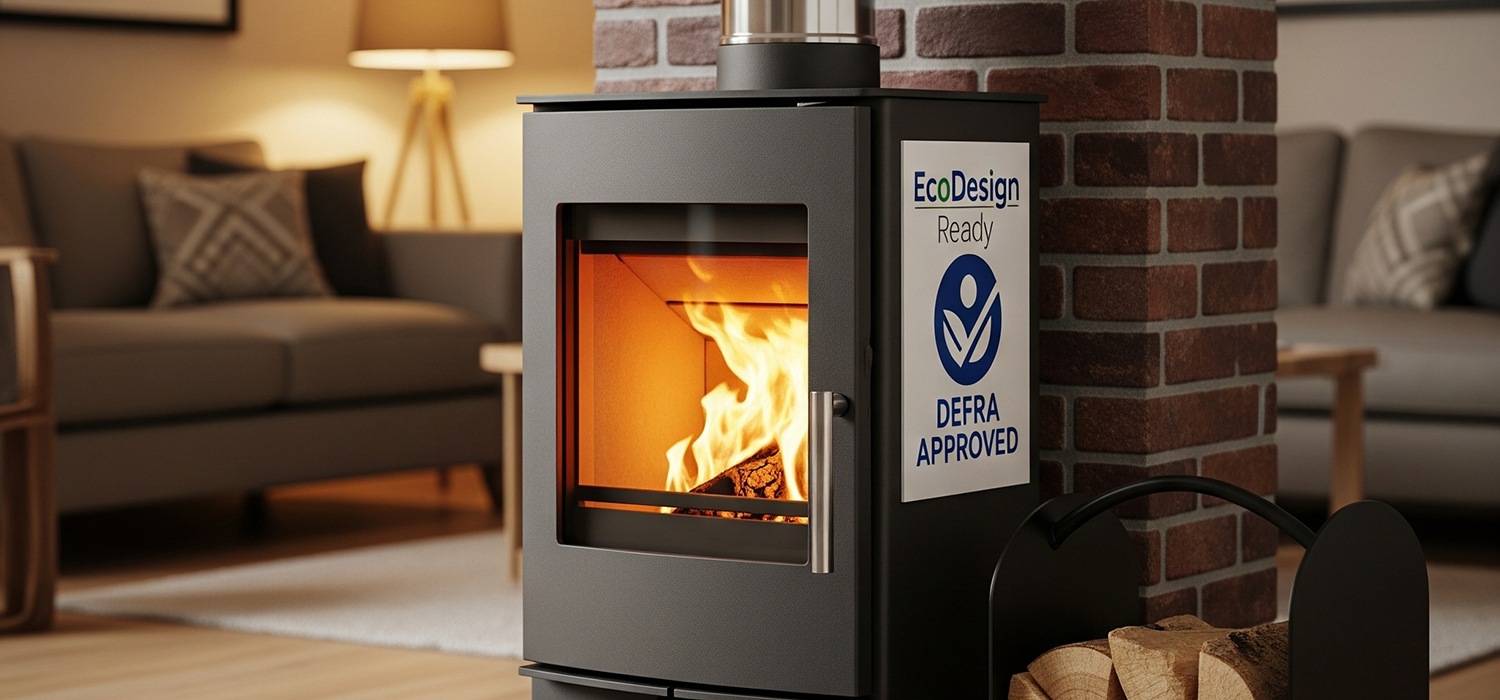
What Are the New Log Burner Rules in the UK?
Log Burners may still warm your toes, but new UK rules want them to warm the planet a little less. In short: stricter emissions, cleaner fuels, and certified installs. Curious about fines, fuel choices, or future bans? Keep reading—your cosy fire depends on it.
Answering the Question: What Are the New UK Log Burner Rules?
If you own a log burner, or you’ve been dreaming of one, you’ve probably noticed the headlines. From "log burner bans" to "new stove crackdowns", the news can sound a little alarming. But what do the rules actually mean for you?
In simple terms, the government has tightened regulations around wood-burning stoves. The goal is to cut down on smoke, soot, and pollution without stealing away the pleasure of a roaring fire. Think of it as keeping the charm of log burners—just with cleaner air as a bonus.
There are three main areas you need to know about:
-
The Ecodesign standards for new stoves.
-
The Ready to Burn scheme for fuels.
-
The compliance rules that help keep your burner legal and safe.
Let’s break them down.
Understanding the Ecodesign Regulations (The Rules for Stoves)
Since January 2022, every new stove sold in the UK has to meet Ecodesign regulations. These rules, originally set by the EU, still apply here and they set the bar high.
For starters, new stoves must produce fewer emissions—no more choking plumes of smoke drifting down your street. They also have to burn more efficiently, so you get more heat for every log you use. That’s a win for both your comfort and your wallet.
Manufacturers now test and certify their stoves before they hit the shelves. In fact, by 2025, the emission limits are tightening even further. It means that the next generation of stoves isn’t just stylish—it’s designed to be part of a cleaner, greener future.
The New Laws on What You Can Burn (The "Ready to Burn" Scheme)
The second big change is about fuel. No matter how efficient your stove is, it’s useless if you’re feeding it soggy logs. Burning wet or unseasoned wood produces thick smoke, clogs chimneys, and pumps out pollutants.
That’s why the Ready to Burn scheme was introduced. It makes it illegal to sell wood with more than 20% moisture for home use. If you’re buying logs, you’ll see the Ready to Burn logo stamped on packaging—it’s your guarantee that the wood has been properly dried.
In Smoke Control Areas, which are spreading across towns and cities, the rules are even stricter. Only approved smokeless fuels can be used. So, whether you’re stacking a log store in your garden or nipping to a supplier, double-check the fuel meets the standards.
Do the New Rules Affect Your Existing Log Burner?
The big question homeowners always ask is: “Do I need to rip out my old stove?” The short answer is no—but you do need to pay attention.
The Good News for Old Stoves
If your log burner is already installed, you won’t be forced to replace it overnight. Your current stove can stay in place, as long as you’re sensible about how you use it.
That means sticking to dry, approved fuels, and keeping up with regular maintenance. Sweep your chimney annually, check your flue, and make sure your burner isn’t belching smoke into the neighbourhood.
Put simply, you don’t have to part with your beloved stove—just treat it kindly and burn responsibly.
When You Might Need to Upgrade
There are situations where upgrading your stove becomes the smarter (or necessary) move. For example, if you live in a Smoke Control Area and your current burner isn’t exempt, you could face fines for using it.
Equally, if your stove is ancient and struggling, you might notice it eats through logs and still leaves your living room chilly. Modern Ecodesign stoves are far more efficient, giving out more heat with less fuel. So while upgrading can feel costly upfront, it often pays for itself in the long run.
Some homeowners also choose to upgrade just to stay ahead of the curve. With regulations tightening in 2025 and beyond, fitting a compliant model now could save you stress later.
Key Takeaways to Stay Legal and Safe
The new rules aren’t meant to scare people—they’re about striking a balance. You get your cosy fire; the environment gets cleaner air.
To stay legal and safe, focus on three golden rules: install your stove professionally, burn the right fuels, and keep up with regular checks. It really is that simple.
The Penalties for Breaking the Rules
What happens if you ignore the rules and keep burning whatever you like? Councils are cracking down, and the penalties aren’t worth the risk.
If you’re caught burning wet wood or unapproved fuels, you could be slapped with a fine of £150–£500. Persistent offenders may even face legal action or be told to remove their stove completely.
Enforcement officers don’t just guess—they’ll check the quality of your fuel, the type of stove you’re using, and whether smoke is drifting from your chimney in restricted areas. Save yourself the hassle: follow the rules and you’ll stay in the clear.
The Importance of Using Certified Fuel
Certified fuel isn’t just about avoiding penalties—it’s about making your life easier. Logs carrying the Ready to Burn logo will give you a hotter, cleaner fire. That means less smoke, less creosote in your chimney, and less chance of complaints from neighbours.
It also means you’re doing your bit for the environment. Burning properly seasoned wood cuts emissions dramatically compared to damp or unapproved fuel. In fact, studies suggest that modern stoves paired with dry logs can cut harmful particles by up to 90%.
So while that bargain pile of damp logs might look tempting, it’s a false economy. Your stove will burn better, your chimney will stay cleaner, and your air will be fresher with certified wood.
Final Thought
The new log burner rules in the UK aren’t about banning fires in your living room. They’re about making sure that when we light them, we do it responsibly. Cleaner stoves, drier logs, and smarter maintenance keep the tradition alive while protecting the air we all breathe.
So whether you’re upgrading to a shiny new Ecodesign stove or simply making sure your old one is fuelled correctly, the message is the same: burn smart, burn clean, and keep the flames without the fuss.
Other content we think you'll love
- Why Your Log Burner is Smoking: Causes, Fixes, and Safety Tips
- Why Does My Log Burner Smell?
- Why Your Log Burner Is Burning Too Fast (And How to Fix It)
- Why Does My Log Burner Keep Smoking? Common Causes & Fixes
- Why Your Log Burner Won’t Stay Lit (and How to Fix It)
- Why Is My Log Burner Smoking? Causes, Fixes & Prevention
- Can You Safely Put a TV Above a Log Burner?
- Keeping Your Baby Safe Around Log Burners
- Can You Safely Install a Log Burner Near Glass?
- Why Your Fireplace Smells Like Burning Plastic (and What to Do About It)
- Log Burner Carbon Monoxide: Stay Safe from the Silent Killer
- Log Burner Law UK: The Complete Guide for Homeowners

